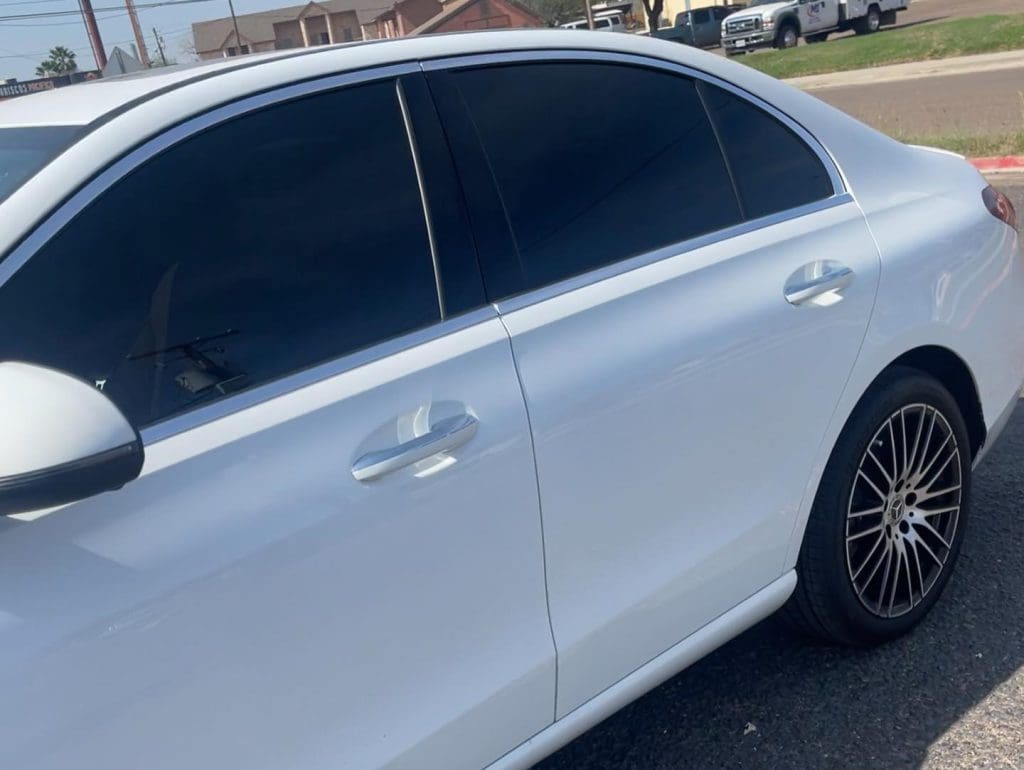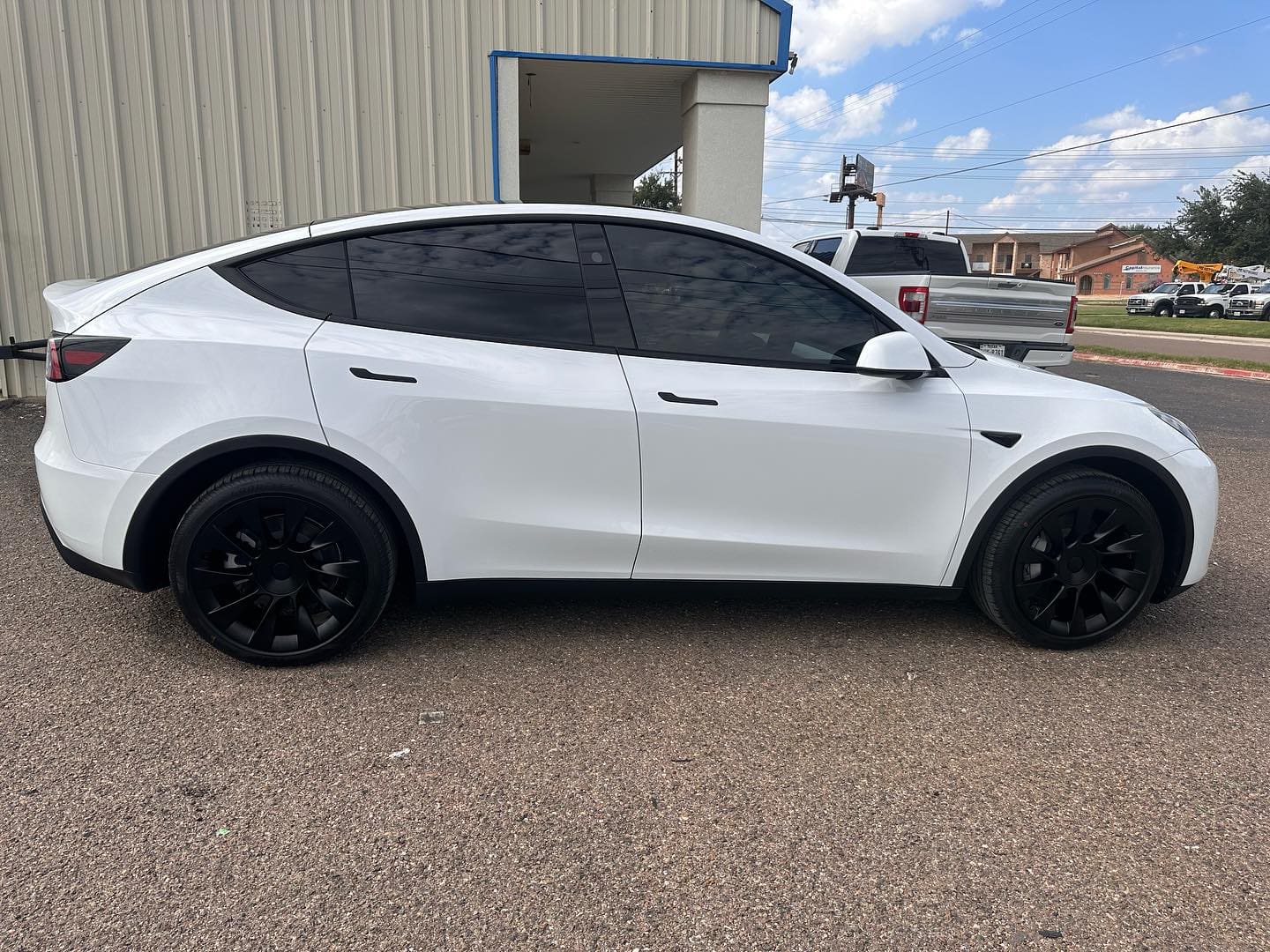Window tinting is very popular in Texas. If you want to tint your car windows in Texas, you should first know the Texas window tint law. These laws set specific rules for how dark or reflective your window tint can be. The rule is not the same for every type of car, though.
In this guide, we will explain the Texas window tinting laws for sedans and SUVs/vans in simple terms.
Window Tint Darkness for Sedans
The level of darkness is measured by Visible Light Transmission (VLT), the percentage of light that passes through the window. The lower the VLT, the darker the tint. Texas window tint law for sedans:
- Windshield: 25% VLT tint is allowed only on the top 5 inches of the windshield.
- Front-Side Windows: The tint must allow more than 25% of light to pass through.
- Back Side Windows: Any level of darkness is allowed.
- Rear Window: Any level of darkness is allowed if you have dual side mirrors. If not, the tint must allow 25% of light.

Window Tint Darkness for SUVs and Vans
The rules for SUVs and vans are similar to those for sedans, but the rear windows are more flexible.
- Windshield: 25% VLT tint is allowed only on the top 5 inches of the windshield.
- Front-Side Windows: The tint must allow more than 25% of light to pass through.
- Back Side Windows: Any darkness can be used.
- Rear Window: Any level of darkness is allowed if you have dual side mirrors. If not, the tint must allow 25% of light.
Window Tint Reflection Laws in Texas
Texas window tint law also regulates how much light a window tint can reflect. Reflective tint helps reduce glare and heat, but too much reflection can be dangerous for other drivers.
For both sedans and SUVs/vans, the reflection rules are the same:
- Front Side Windows: Can’t be more than 25% reflective.
- Back Side Windows: Can’t be more than 25% reflective.
Make sure to avoid excessively reflective tints to stay within the legal limits.

Other Important Texas Tinting Laws
Some additional rules and regulations apply to car window tinting in Texas. Here are a few you should know:
- Side Mirrors: If the rear window is tinted, your car must have dual side mirrors.
- Restricted Colors: Texas tint laws do not allow red, blue, or amber window tint colors.
- Certificates: Manufacturers must certify the tint film they sell in Texas.
- Stickers: The law requires a sticker identifying the tint film's installer and manufacturer.
- Medical Exemptions: Texas window tint law allows medical exemptions if you have a medical condition that requires extra protection from the sun.
Conclusion
Understanding Texas window tinting laws is necessary to tint your car windows. Make sure your tint meets the legal limits for both darkness and reflection. If you’re unsure about what type of tint is right for your vehicle, consult a professional like Cavazos Auto Spa.
Cavazos Auto Spa is a great choice if you want to tint your car windows in Laredo, TX. We offer top-tier Window Tinting services near Laredo. Our High-quality window tints from XPEL provide superior heat rejection and UV protection. Contact us today to book an appointment.


